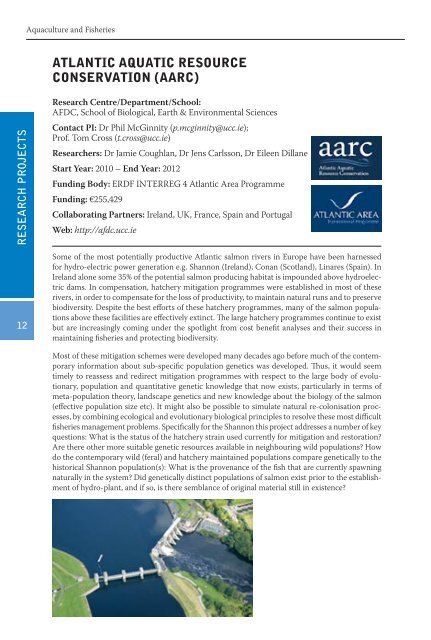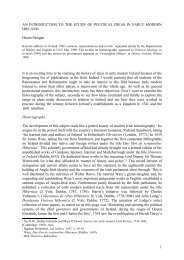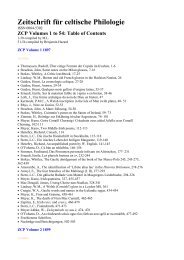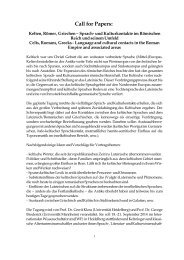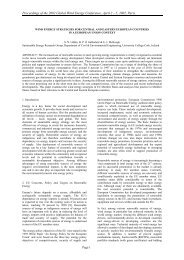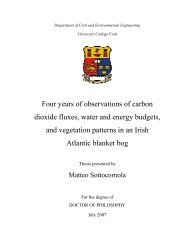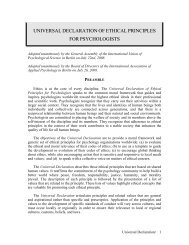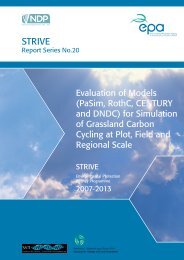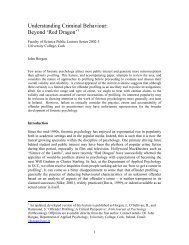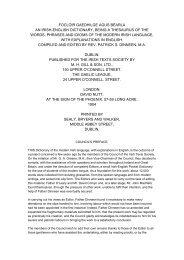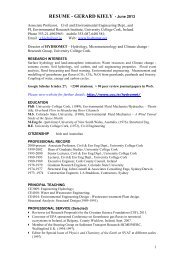2013 - University College Cork
2013 - University College Cork
2013 - University College Cork
You also want an ePaper? Increase the reach of your titles
YUMPU automatically turns print PDFs into web optimized ePapers that Google loves.
RESEARCH PROJECTS<br />
Aquaculture and Fisheries<br />
2<br />
ATLANTIC AQUATIC RESOURCE<br />
CONSERVATION (AARC)<br />
Research Centre/Department/School:<br />
AFDC, School of Biological, Earth & Environmental Sciences<br />
Contact PI: Dr Phil McGinnity (p.mcginnity@ucc.ie);<br />
Prof. Tom Cross (t.cross@ucc.ie)<br />
Researchers: Dr Jamie Coughlan, Dr Jens Carlsson, Dr Eileen Dillane<br />
Start Year: 2010 – End Year: 2012<br />
Funding Body: ERDF INTERREG 4 Atlantic Area Programme<br />
Funding: €255,429<br />
Collaborating Partners: Ireland, UK, France, Spain and Portugal<br />
Web: http://afdc.ucc.ie<br />
Some of the most potentially productive Atlantic salmon rivers in Europe have been harnessed<br />
for hydro-electric power generation e.g. Shannon (Ireland), Conan (Scotland), Linares (Spain). In<br />
Ireland alone some 35% of the potential salmon producing habitat is impounded above hydroelectric<br />
dams. In compensation, hatchery mitigation programmes were established in most of these<br />
rivers, in order to compensate for the loss of productivity, to maintain natural runs and to preserve<br />
biodiversity. Despite the best efforts of these hatchery programmes, many of the salmon populations<br />
above these facilities are effectively extinct. The large hatchery programmes continue to exist<br />
but are increasingly coming under the spotlight from cost benefit analyses and their success in<br />
maintaining fisheries and protecting biodiversity.<br />
Most of these mitigation schemes were developed many decades ago before much of the contemporary<br />
information about sub-specific population genetics was developed. Thus, it would seem<br />
timely to reassess and redirect mitigation programmes with respect to the large body of evolutionary,<br />
population and quantitative genetic knowledge that now exists, particularly in terms of<br />
meta-population theory, landscape genetics and new knowledge about the biology of the salmon<br />
(effective population size etc). It might also be possible to simulate natural re-colonisation processes,<br />
by combining ecological and evolutionary biological principles to resolve these most difficult<br />
fisheries management problems. Specifically for the Shannon this project addresses a number of key<br />
questions: What is the status of the hatchery strain used currently for mitigation and restoration?<br />
Are there other more suitable genetic resources available in neighbouring wild populations? How<br />
do the contemporary wild (feral) and hatchery maintained populations compare genetically to the<br />
historical Shannon population(s): What is the provenance of the fish that are currently spawning<br />
naturally in the system? Did genetically distinct populations of salmon exist prior to the establishment<br />
of hydro-plant, and if so, is there semblance of original material still in existence?


